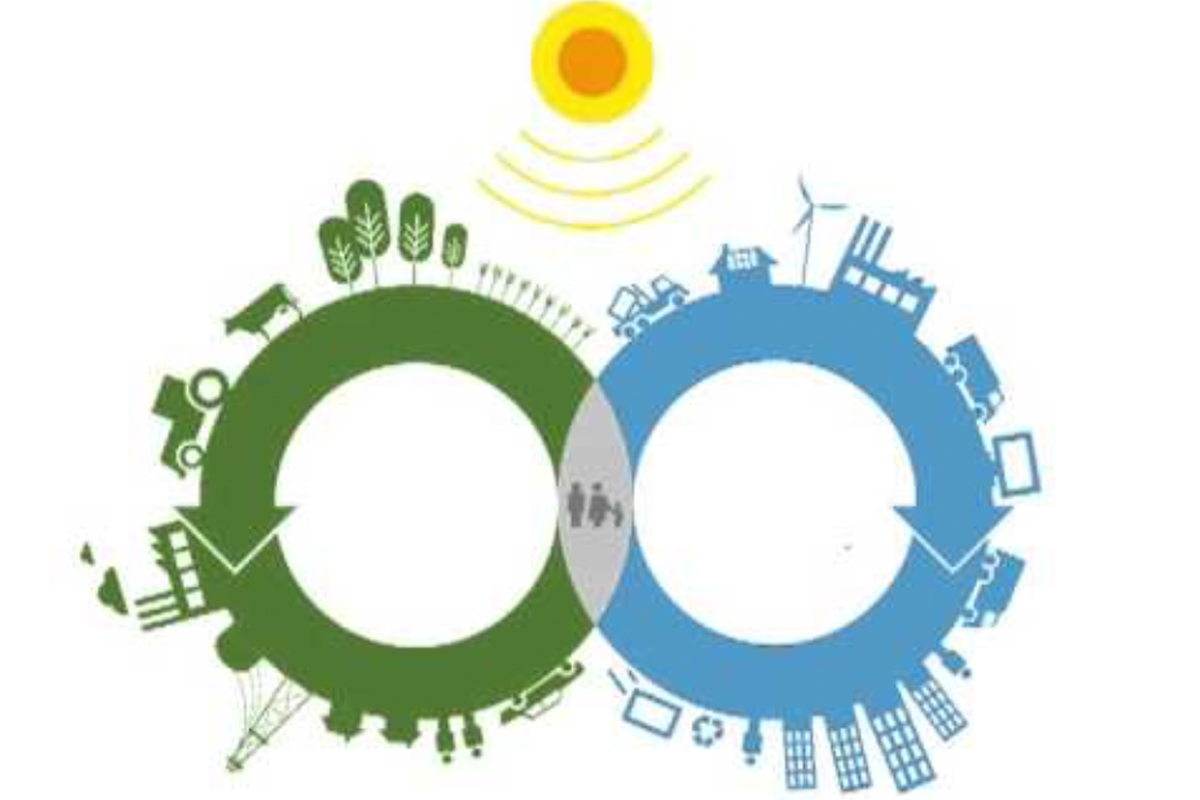Circular thinking
Emil Urhammer
In order to understand what circular economy is, it may be helpful to compare the concept to the so-called linear economy, which refers to a production and consumption form which could also be called ‘use and throw away’, where new resources are constantly being extracted to make products that are simply discarded as soon as they break or no longer interest us. The circular economy represents a break with this approach and encompasses the idea that there are clever and more sustainable ways of producing and consuming.
Biomimetics
One of the main inspirations for circular economy is the biological cycle, where the ‘waste’ of one species enters, in a positive way, the ecosystem cycle of which it is part. In the biological cycles, there are no rubbish dumps, instead, materials are circulating constantly and the waste of one species is another’s food source. It is all kept going thanks to the sun’s energy, which maintains life in the ecosystems. It is this kind of sustainability that the circular economy tries to imitate and it, thus, involves the idea of industrial production being powered by renewable energy sources, where at the end of their lifetime, individual products are either used in new production processes or become part of the planet’s biological cycles without problems.
Two cycles
The circular economy operates with two different cycles: the biological and the technical. The biological cycle was described in the previous paragraph, while the technical cycle is an industrial cycle that has to ensure that goods and resources are recycled and are included in new products instead of becoming pollution in the biological cycle. It is impossible to separate the two cycles, but the basic idea of circular economy is that when the technical cycle releases materials to the biological, they must be able to enter the biological cycle without problems. In other words, waste from production and consumption, such as packaging, must be biodegradable. For example, a soft drink bottle that ends up in the ocean has to dissolve and become harmless elements in the marine ecosystem. Similarly, a disposable plate that is thrown on the ground must dissolve and become compost.
The biological and technical cycle. Source: Pinterest. https://www.pinterest.com/sumdy/circular-economy-videos/
Related concepts
There are also other concepts that resemble circular economy. In this connection, cradle-to-cradle and industrial ecology should be emphasised. Cradle-to-cradle also represents a break with the linear economy, which is here called the cradle-to-grave economy. The cradle refers to the extraction of raw materials, while grave refers to a product ending up as waste. In contrast, the cradle-to-cradle approach considers old products to be cradles for new products, just like the circular economy.
Industrial ecology focuses on how different industries can exploit each other’s waste products for their own production. In Denmark, the Kalundborg Symbiosis, where different factories exchange water, steam and plaster with each other, is a good example of industrial ecology.
